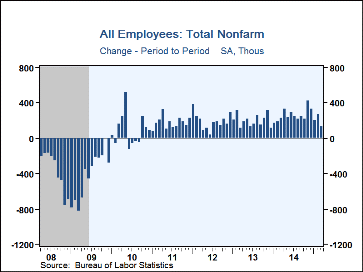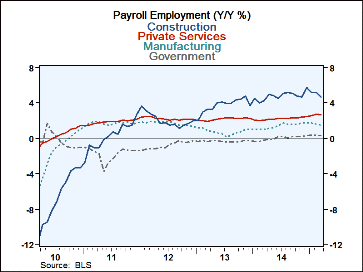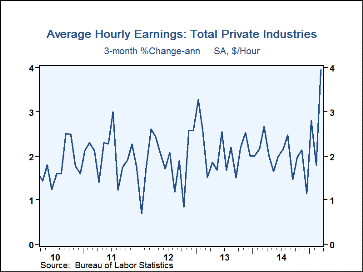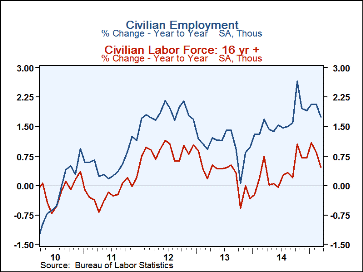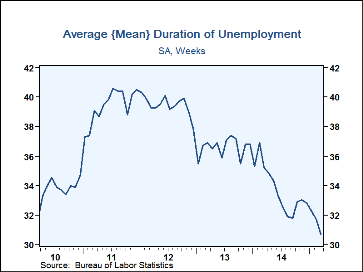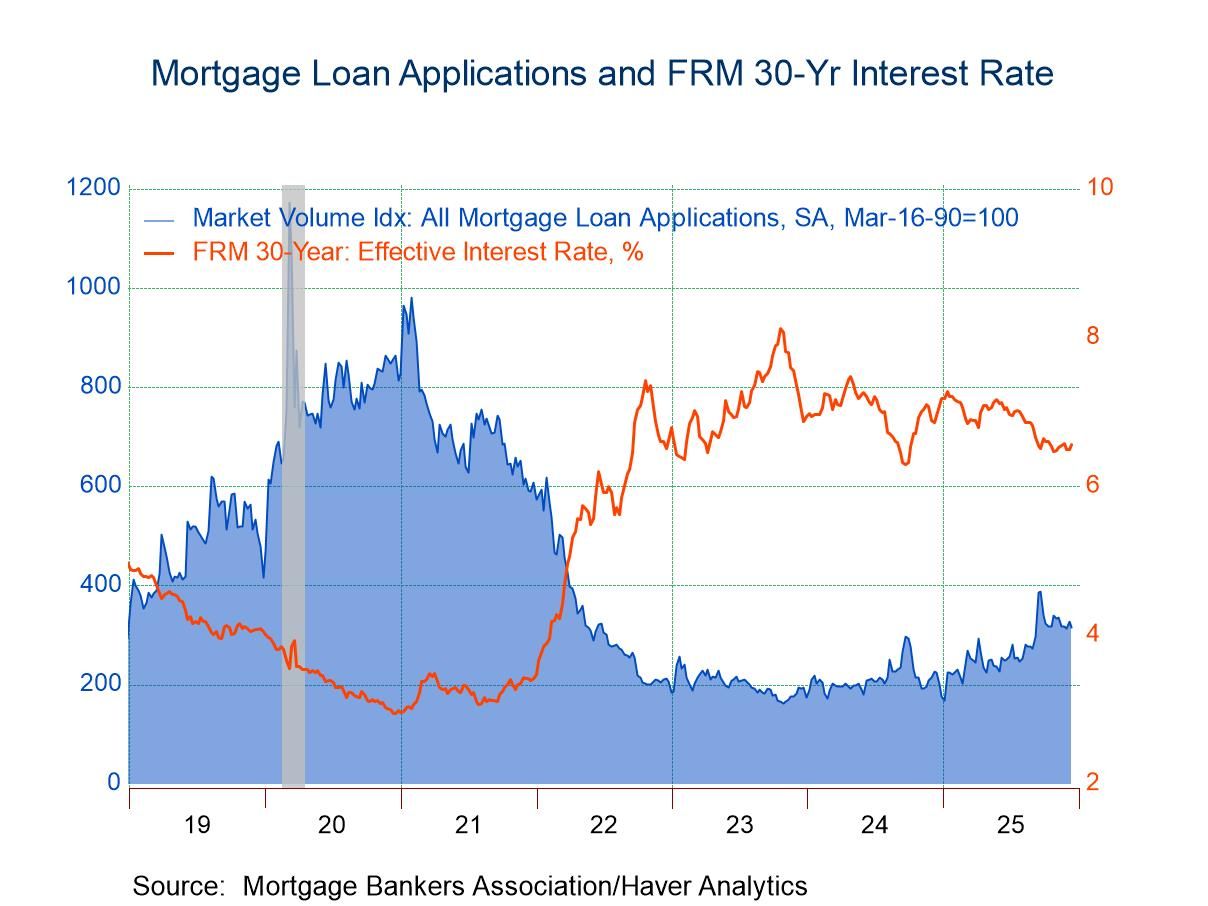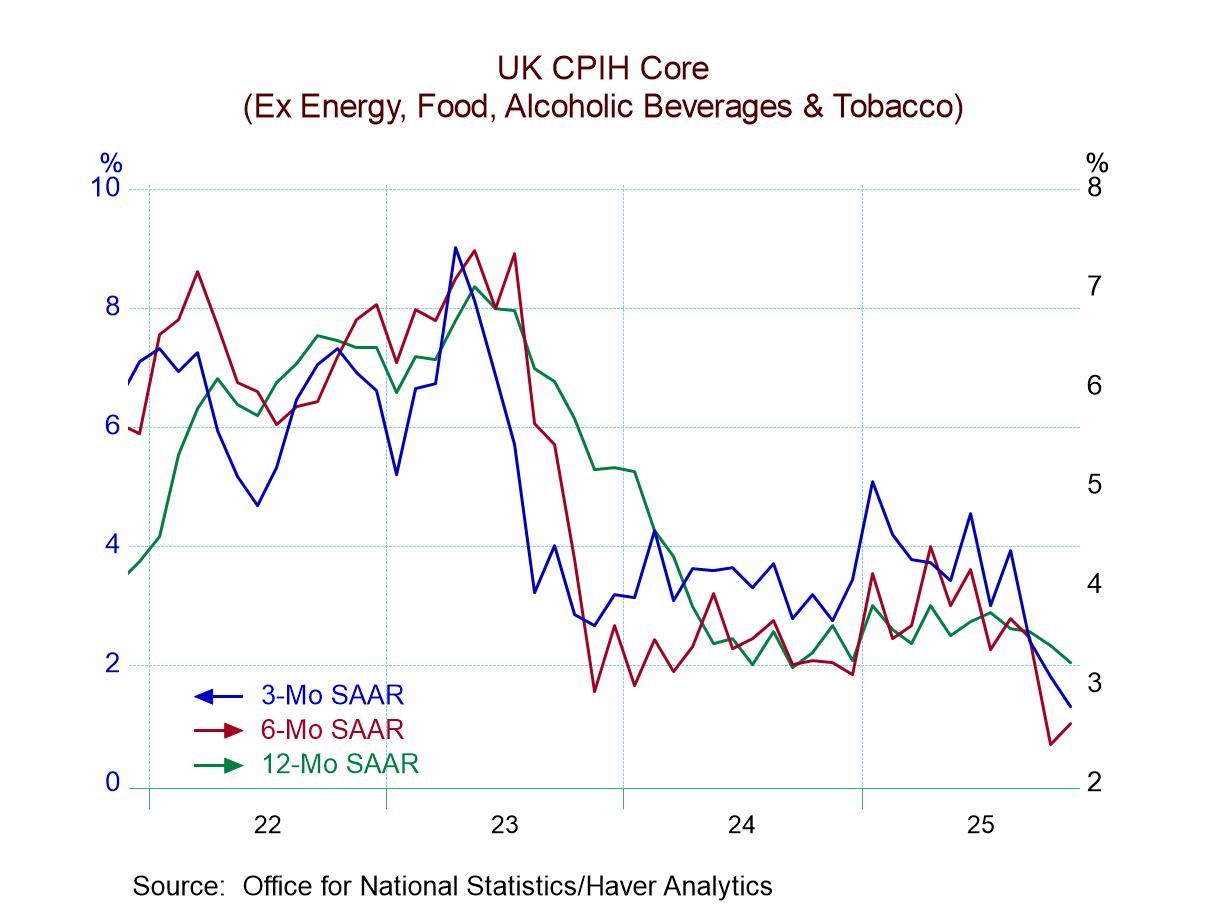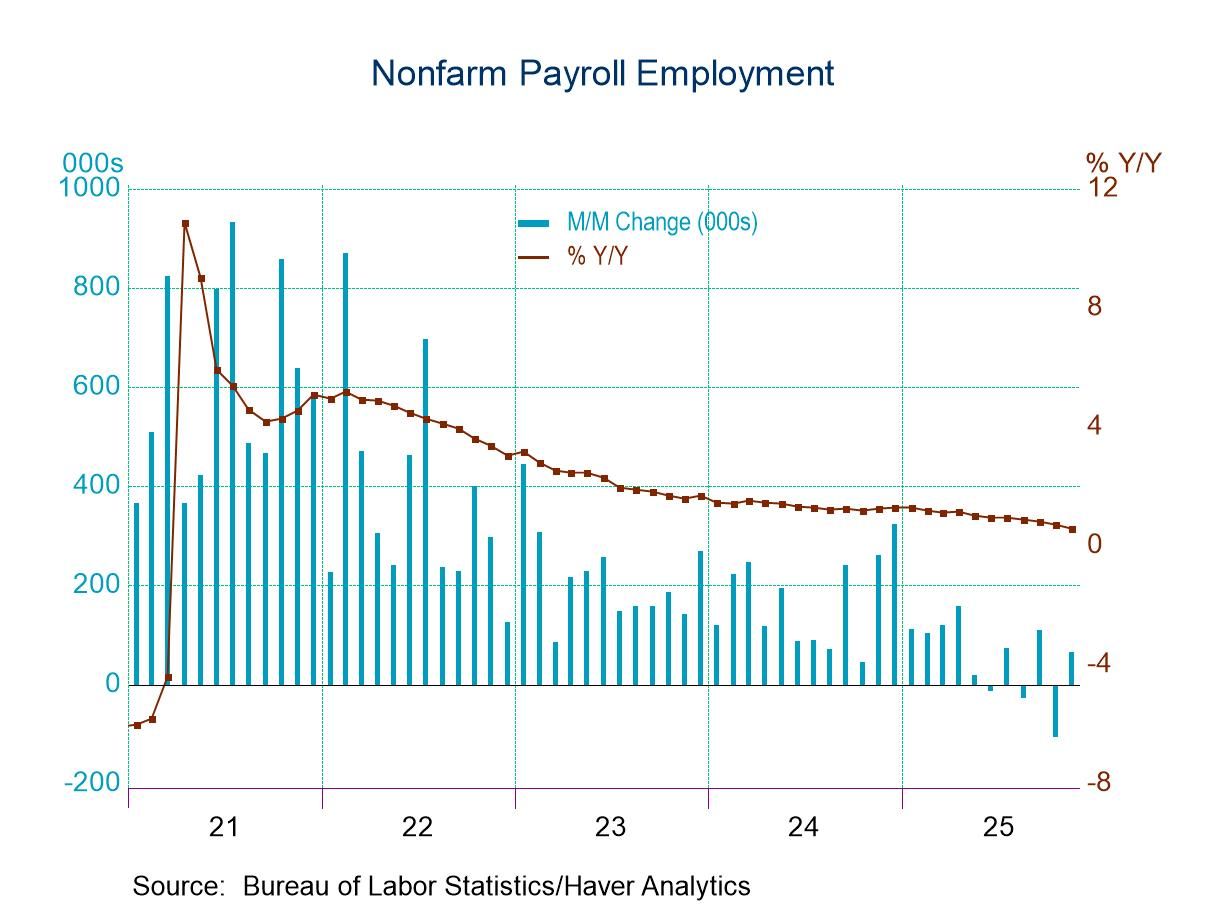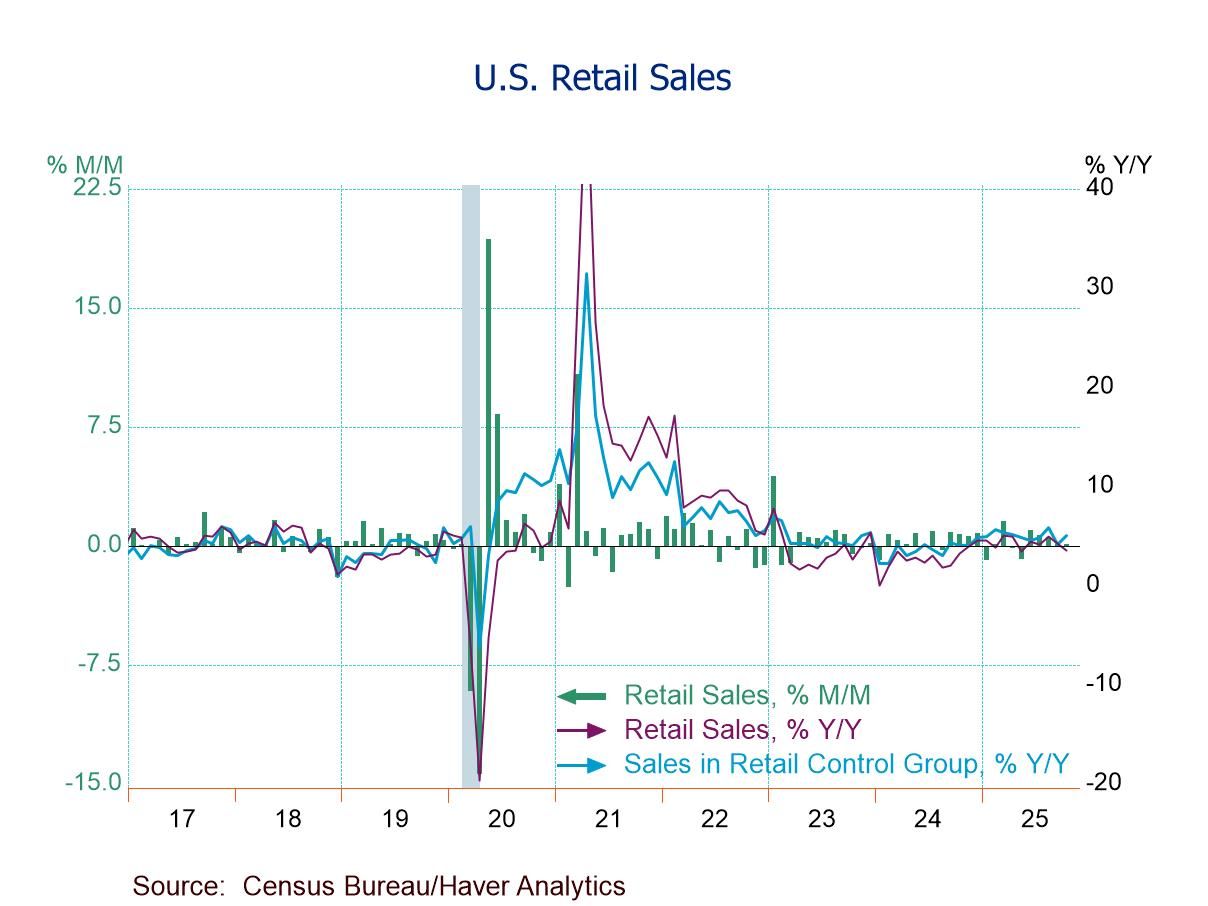 Global| Apr 03 2015
Global| Apr 03 2015U.S. Payroll Increase Disappoints; Jobless Rate Holds Steady; Earnings Strengthen
by:Tom Moeller
|in:Economy in Brief
Summary
Job market improvement lost steam last month. Nonfarm payroll employment during March increased 126,000 (2.3% y/y) following a 264,000 February rise, revised from 295,000. January's advance also was lessened to 201,000 from 239,000. [...]
Job market improvement lost steam last month. Nonfarm payroll employment during March increased 126,000 (2.3% y/y) following a 264,000 February rise, revised from 295,000. January's advance also was lessened to 201,000 from 239,000. The latest increase compared to expectations for 248,000 in the Action Economics Forecast Survey. Weakened job increases were apparent in all categories. The unemployment rate of 5.5% remained unchanged, however, at its lowest point since May 2008. The overall unemployment rate, including marginally attached and those working part-time for economic reasons, slipped to a new low of 10.9%.
From the payroll market survey, the 126,000 worker advance was the weakest since December 2013. It reflected weaker growth in each employment category. Factory sector jobs slipped 1,000 (+1.6% y/y) after a negligible 2,000 rise in February. The construction sector also posted a 1,000 worker decline (+4.9% y/y). Private service sector employment improved 142,000 (2.7% y/y), the weakest advance since February 2014. Professional & business services jobs grew 40,000 (3.5% y/y), about the same as in February. Temporary jobs rose 11,400 (5.3% y/y), the first gain in three months. Education & health services employment rose 38,000 (2.5% y/y) and retail employment advanced 25,900 (2.1% y/y). Transportation & warehousing jobs grew 9,500 (3.6% y/y) and leisure & hospitality employment rose 13,000 (3.4% y/y). Financial activities employment gained 6,500 (1.7% y/y) while wholesale trade jobs rose 5,800 (1.9% y/y). Government sector payrolls declined 3,000 (+0.3% y/y), extending a string of three consecutive months of little change. State government employment fell 4,000 (+0.4% y/y) and federal government jobs fell 2,000, unchanged y/y. Local employment grew 3,000 (0.4% y/y).
The length of the average workweek slipped to 34.5 hours reflecting declines in the manufacturing (40.9 hours) and construction (39.1 hours) sectors. Private service-producing hours remained unchanged at 33.4 hours. Aggregate hours worked (employment times hours) slipped 0.2% (+2.7% y/y), the first decline since December 2013. For Q1, aggregate hours rose at a 2.2% annual rate after a 4.1% Q4 rise. During the last ten years, there has been a 67% correlation between the change in aggregate hours and the change in real GDP.
Employee compensation is improving. Average hourly earnings increased 0.3% (2.1% y/y) following a 0.1% uptick. During the last three months, earnings have soared at a 4.0% annual rate, double the growth during the last several years. There was notable strength during the last three months in the construction (6.4% AR) and private service producing (4.0% AR) areas, particularly in the professional & business sector. Factory sector earnings also were up at a 3.4% rate, the quickest rate of increase in two years.
From the household employment survey, the steady unemployment rate of 5.5% reflected a 34,000 worker gain (1.7% y/y) in employment and a 96,000 decline in the labor force (+0.4% y/y). The noninstitutional population rose 0.1% to 250.1 million (1.1% y/y); these combined moves pushed the labor force participation rate back down to 62.7%, tied for the lowest since late 1977. The participation rate for adult men slipped to 71.9% while for adult women it held steady at 58.1%.
The average duration of unemployment fell to a recovery low of 30.7 weeks versus 40.6 weeks at the cycle peak. The percent out of work for 52 weeks or more was 20.0% versus 32.4% at the cycle high.
The unemployment rate for individuals with less than a high school diploma rose to 8.6%, marking a sixth month of non-improvement following a low of 7.9% back in October. The jobless rate for those with a high school diploma but no college was 5.3% and has hovered in a narrow range since September. Individuals with some college but less than a bachelor's degree saw 4.8% joblessness, a new low since the recession, while those with a bachelor's degree or higher extended a recent marked decline, reaching 2.5%.
The labor market data is contained Haver's USECON database. Detailed figures are in the EMPL and LABOR databases. The expectations figure is in the AS1REPNA database.
| Employment: (M/M Chg., 000s) | Mar | Feb | Jan | Y/Y | 2014 | 2013 | 2012 |
|---|---|---|---|---|---|---|---|
| Payroll Employment | 126 | 264 | 201 | 2.3% | 1.9% | 1.7% | 1.7% |
| Previous | -- | 295 | 239 | -- | -- | -- | -- |
| Manufacturing | -1 | 2 | 17 | 1.6 | 1.4 | 0.8 | 1.7 |
| Construction | -1 | 29 | 41 | 4.9 | 4.8 | 3.7 | 2.1 |
| Private Service Producing | 142 | 244 | 151 | 2.7 | 2.2 | 2.2 | 2.2 |
| Government | -3 | 0 | -1 | 0.3 | 0.0 | -0.3 | -0.8 |
| Average Weekly Hours - Private Sector | 34.5 | 34.6 | 34.6 | 34.5 (Mar.'14) |
34.5 | 34.5 | 34.4 |
| Private Sector Average Hourly Earnings (%) | 0.3 | 0.1 | 0.6 | 2.1 | 2.1 | 2.1 | 1.9 |
| Unemployment Rate (%) | 5.5 | 5.5 | 5.7 | 6.6 (Mar.'14) |
6.1 | 7.4 | 8.1 |
Tom Moeller
AuthorMore in Author Profile »Prior to joining Haver Analytics in 2000, Mr. Moeller worked as the Economist at Chancellor Capital Management from 1985 to 1999. There, he developed comprehensive economic forecasts and interpreted economic data for equity and fixed income portfolio managers. Also at Chancellor, Mr. Moeller worked as an equity analyst and was responsible for researching and rating companies in the economically sensitive automobile and housing industries for investment in Chancellor’s equity portfolio. Prior to joining Chancellor, Mr. Moeller was an Economist at Citibank from 1979 to 1984. He also analyzed pricing behavior in the metals industry for the Council on Wage and Price Stability in Washington, D.C. In 1999, Mr. Moeller received the award for most accurate forecast from the Forecasters' Club of New York. From 1990 to 1992 he was President of the New York Association for Business Economists. Mr. Moeller earned an M.B.A. in Finance from Fordham University, where he graduated in 1987. He holds a Bachelor of Arts in Economics from George Washington University.


